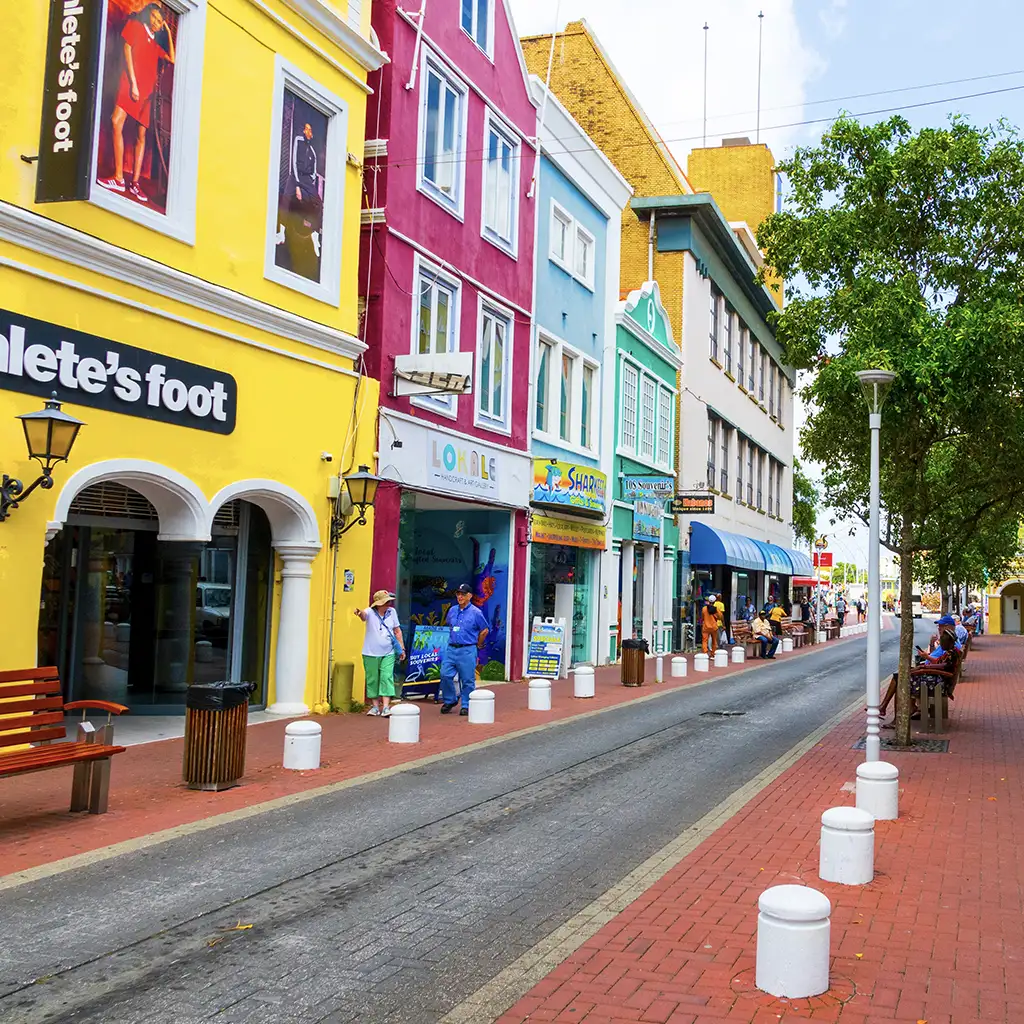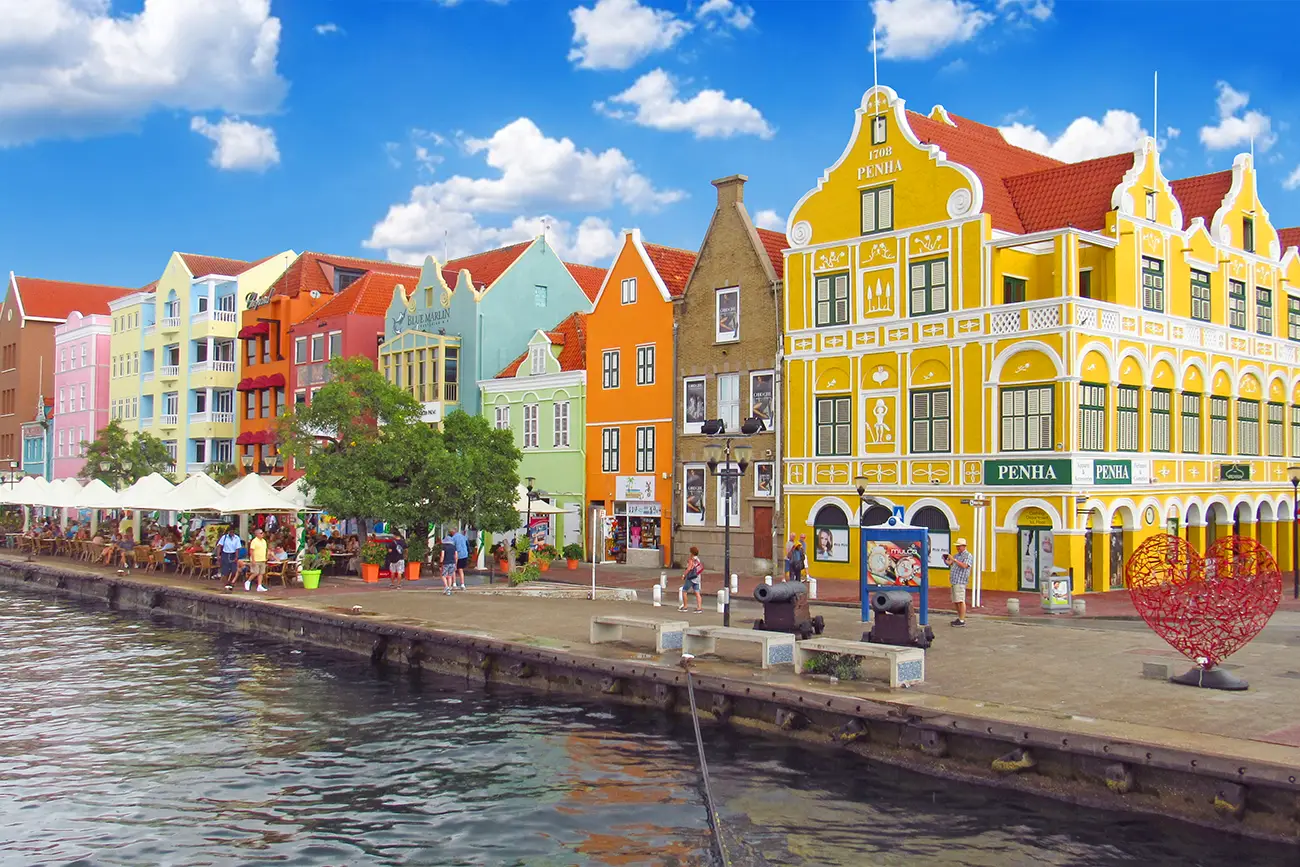
Willemstad
With its colorful gabled merchant houses overlooking the harbor, Curacao's capital Willemstad brings an air of Amsterdam to the tropics. Founded in 1634 by the Dutch West India Company, it has always been a port and cosmopolitan trade enclave. In 1997, UNESCO recognized its immense cultural worth and declared it a World Heritage Site. Yet it is much more than history, it is a flourishing duty-free shopping enclave and if this isn't enough, the open-air cafes gracing its busy squares are the perfect place to soak up the ambiance.
Known as the Handelskade, the bustling waterfront is the site of Fort Amsterdam, the garrison built in 1634 to guard the approaches to Sint Anna Bay and Schottegat harbor. It soon became the headquarters of the Dutch West India Company and is now the seat of the government of the Netherlands Antilles. The Fortkerk garrison church (1769) houses a small museum.
The city's two most important districts are Punda, to the east of the harbor, and Otrobanda to the west. The bay is spanned by the Queen Emma Bridge, a floating pontoon bridge that has been operating since 1888, Queen Wilhelmina Bridge (1924) and the Queen Juliana Bridge (1974).
You can explore the city at your own pace and if you want to know more about its history sign up for a heritage walking tour with a knowledgeable guide. Other options are a trolley train ride through Punda and Scharloo or a harbor cruise from the Curacao Maritime Museum.
Shopping with a Dash of History in Punda
The oldest part of Willemstad, the Punda (the Point in Papiamento) district dates from the 17th century and grew up around Fort Amsterdam in a grid plan. Narrow streets and alleys lined with merchant houses that were part residences, part shops and even warehouses filled the area between the fort and the town walls which were dismantled in 1860. Another fort, the Waterfort, was built to protect the outer rim of the settlement and Fort Nassau was added in 1797 to reinforce the Sint Anna Bay defenses.
Punda is the site of the Mikvé Israel-Emanuel Synagogue which was built in 1732 and is the oldest continuously used Jewish temple in the Western Hemisphere. The sand-covered floor is a symbol of the biblical journey through the Sinai Desert and the Spanish Inquisition when it was used to muffle the sound of services. A Jewish Cultural Museum is located next to the synagogue.
The lively Floating Market on Sha. Caprileskade and the Marshe Bieu, the old market building, are also worth a visit.

The Other Side, Otrobanda
Cross the Koningin Emmabrug swing bridge to Otrobanda, a lively district of 18th and 19th-century merchant houses and mansions. The area has four distinct neighborhoods: the Stegengebied maze of alleys; the Koralengebied which is full of spacious houses with walled courtyards and cottages where the servants lived; the Ijzerstraat quarter of curving streets, squares and lanes and the Hoogstraat area of mansions.
The alleyways and tiny squares of Ijzerstraat are now the site of the Kura Hulanda hotel and museum complex. The brainchild of Dutch historian and entrepreneur, Jacob Gelt Dekker, the Kura Hulanda Museum documents the history of slavery on Curacao and in the Caribbean; and showcases the great ancient civilizations of West Africa and their legacy, tangible in the music, art, kunuku thatched roof houses and traditions of the islanders. There are also exhibitions on the origin of mankind, pre-Hispanic cultures of the Caribbean, different ethnic groups in North and South America and the artists of the region. The museum is actually built on the square where the Willemstad Slave Market was held.
Other sites of interest in Otrobanda include the St Anna Basilica (1734) and the 19th-century forts called the Riffort, now a shopping and dining complex, and Fort Waakzaamheld. Located in a listed building dating from 1853, the Curacao Museum has informative displays on island history from the days of the Caiquetos, the first Amerindian inhabitants, to modern times.
The residential districts of Pietermaai and Scharloo also boast fine mansions dating from the 19th century, some of which were built by the island's Jewish community. Scharloo is also the site of the Maritime Museum. This multimedia facility has a fine collection of old maps, scale models and nautical paraphernalia and offers an interesting introduction to Curacao's seafaring and shipbuilding past.
You may wonder about the bright colors used on local residences. According to local lore, an early governor banned the use of white house paint in Willemstad, saying that it caused headaches and could damage the eyesight in the blinding tropical sun. He ordered citizens to use a palette of yellow, pink, turquoise and a variety of pastels when painting their homes. The story goes that after the governor died, they discovered that he had shares in a local paint company!

